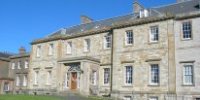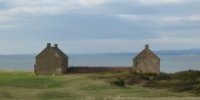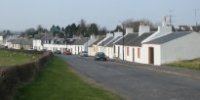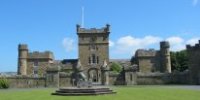 |
 |
 |
 |
Reviews |
 |
Copyright notice: Links to this site are welcomed. However none of the material on the site may be duplicated in any form. The copyright of the articles is the property of the authors. Copyright of the web pages is the property of David McClure. |
John Hume, Vernacular Building in Ayrshire
Reviewed by David B. Smith
Vernacular Building in Ayrshire, by John R Hume. Ayrshire Archaeological and Natural History Society, Ayrshire Monographs 29. 2004. £4.50. 80pp.
John Hume is well known to the members of [the Kilmarnock and District History Group, in whose newsletter this review first appeared]. He has often enlightened and entertained us with his lectures on different parts of Ayrshire’s “built heritage”, usually with an emphasis on the industrial side. When he retired in 1999 after a varied career in economic history and “historic buildings” he was Chief Inspector of Historic Buildings in Scotland.
Whenever he lectures in Ayrshire he emphasises his family’s long connection with the county, and his affection for the buildings of the county is palpable in this booklet, which is a gem. It is a much-expanded version of a booklet which first appeared in 1988. It now contains a few introductory pages of well-chosen information on the building types of the county and thereafter 104 line drawings of all the different types of structure which fall under the description of vernacular.
That the illustrations are drawings and not photographs is particularly felicitous, for a line drawing enables the artist to concentrate on the essentials and omit the inessentials in a way that is impossible with the verite of a photograph. Although the artist is not explicitly acknowledged in the text it is clear from the initials JRH with which they are signed that they are the work of the author; and he is to be congratulated on the skill he has displayed.
The sketches comprise not only entire buildings but also detail, such as wallhead chimneys, nepus gables and doorways.
The author says at the end of the introduction: “It is to be hoped that this process of increasing recognition of Ayrshire’s vernacular buildings will continue, and that the loss of the character of the survivors will be halted, and even reversed. This is, in my view, a precious inheritance, and one to be cherished, not just for its own sake, but for the sense of place and pride in place which make for sound and happy communities.”
The booklet is beautifully produced and is a credit to all concerned in its publication. It is a must for anyone with the even the slightest interest in the heritage of Ayrshire. I feel certain that it will play a major part in the achievement of the hopes expressed by the author.
David B Smith.